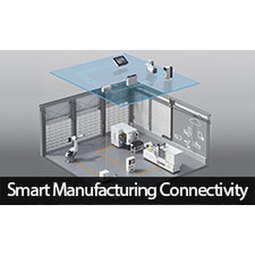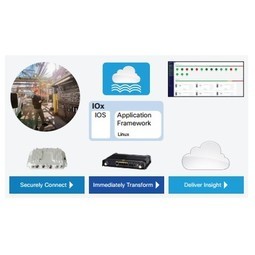Overview
 |
Manufacturing System Automation |
Applicable Industries
Applicable Functions
Case Studies
Market Size
|
The global Smart Manufacturing Market is set for rapid growth and is expected to reach around USD 479.01 billion by 2023. Source: Zion Market Research |
Business Viewpoint
|
How do automated manufacturing systems provide business value? ● Safer for Employees Not only do automated industrial systems increase production capacity, but the quality of that production is improved, along with greater safety for the employees operating the equipment. These systems can also be configured to provide more accurate data to optimize weak points and greatly decrease product defects due to human error. What are the benefits of MIcrogrids? Provides power quality, reliability, and security for end users and operators of the grid Enhances the integration of distributed and renewable energy sources Cost competitive and efficient Enables smart grid technology integration Locally controlled power quality Minimize carbon footprint and greenhouse gas emissions by maximizing clean local energy generation Increased customer (end-user) participation
|
Stakeholder Viewpoint
|
Increased Productivity: Automation enables businesses to achieve higher levels of productivity by streamlining production workflows, reducing cycle times, and minimizing downtime. By automating repetitive tasks, businesses can optimize resource utilization and improve overall efficiency. Cost Savings: Automation helps businesses reduce labor costs, minimize material waste, and lower operational expenses associated with manual production processes. Additionally, automation can lead to long-term cost savings through improved quality control, reduced rework, and increased throughput. |
Technology Viewpoint
|
What are the latest trends in manufacturing technology? New manufacturing technologies are continually emerging. Some of the biggest trends in recent years include:
|
Data Viewpoint
|
Manufacturers: Manufacturers view automation as a strategic investment to enhance competitiveness, meet customer demands, and drive innovation. Automation enables manufacturers to scale production, improve product consistency, and adapt quickly to changing market dynamics. Operators and Technicians: Operators and technicians benefit from automation by being able to focus on more value-added tasks, such as monitoring production processes, troubleshooting equipment issues, and performing maintenance activities. Automation also reduces the risk of human error and enhances workplace safety. |
Deployment Challenges
|
What is the biggest challenge face Manufacturing System Automation? ● Cost of Initial Investment There’s only one real downside to implementing automated manufacturing systems, which is the initial cost. This includes the costs of machinery and implementing automated programming as well as training of employees to manage these new systems. However, ROI on this investment generally pays for itself within a few years.
|





